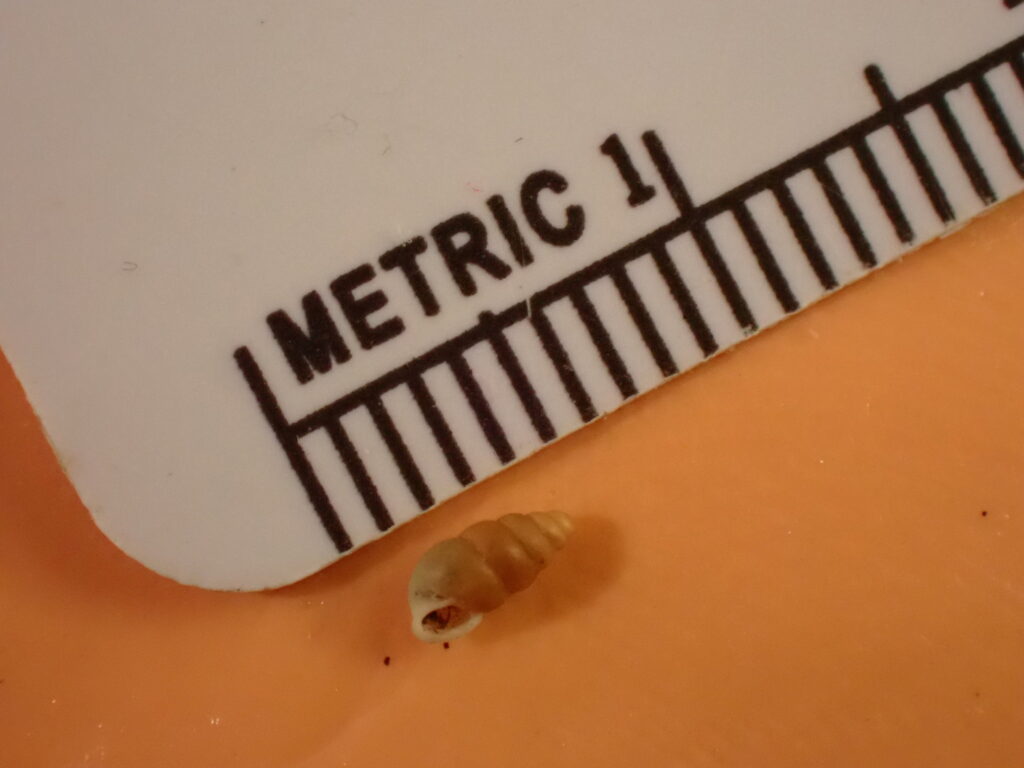

Image Usage Information
Family: Pupillidae
Common name:
Discovery: C.B. Adams, 1841
Identification
Height: ~4.8 mm
Width: ~2.0 mm
Whorls: 6
This species is easily distinguished from all other regional pupillid land snails by its large (>4 mm tall), conical, brown shell with a strongly whitened apertural margin and no apertural lamellae.
Ecology
Pupoides nitidilus is a marked calcium-lover (calciphile) that is found under stones, leaf litter under red cedar, in thin grass turf and thatch accumulations on rock outcrops, bedrock glades, xeric prairie, and old fields. In the western Plains, it is also occasional in riparian forests (Nekola & Coles, 2010).
Taxonomy
Synonyms for this animal’s name include Pupa arizonensis, Pupa albilabris, Pupoides marginatus.
Distribution
This species ranges across most of the southeastern two-thirds of North America, ranging from southeastern Arizona north to the Black Hills of South Dakota and west-central Wisconsin, east to the north shores of Lakes Erie and Ontario, western Vermont, and south into peninsular Florida.
In Virginia, this species has been reported from across the entire state. It appears to be more frequent in limestone districts in the western mountains.
Conservation
NatureServe Global Rank: G5
NatureServe State Rank: S4
